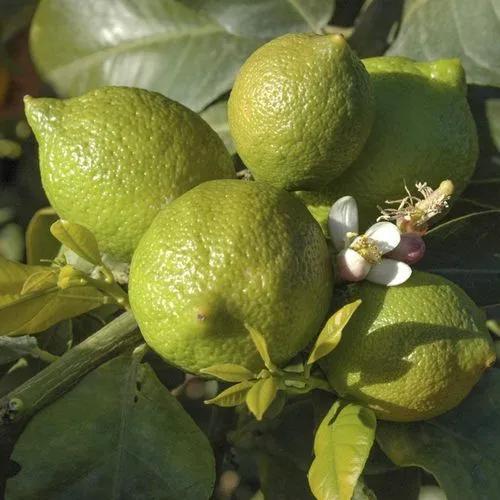Grandidier's baobabs have massive, cylindrical, long, thick, trunks, up to three meters across, covered with smooth, reddish-grey bark.[2] They can reach 25 to 30 m (82 to 98 ft) in height.[3] At certain times of the year the flat-topped crowns bear bluish-green palmate leaves, dark brown floral buds or spectacular flowers with white petals.[2] The large, dry fruits of the baobab contain kidney-shaped seeds within an edible pulp. This baobab occurs in south-western Madagascar, between Lac Ihotry, (near Morombe), and Bereboka.[2] Grandidier's baobab used to inhabit dry, deciduous forest, especially near seasonal rivers or lakes. However, today it is mainly found in open, agricultural land or degraded scrubland
Grandidier'S Baobab Care
Adansonia Grandidieri



The long-lived Grandidier's baobab is in leaf from October to May, and flowers between May and August. The flowers, said to smell of sour watermelon, open just before or soon after dusk, and all the pollen is released during the first night. The tree is pollinated by nocturnal mammals, such as fork-marked lemurs, and insects like the Hawk Moth. The lemurs move through the canopies, inserting their snouts into the white flowers and licking nectar from the petal bases, resulting in pollen being deposited in the lemurs' faces, whereas the moth is slightly more effective at pollination because it is able to fly from tree to tree with most of its body covered in pollen Grandidier's baobab is classified as endangered by the IUCN Red List 2006. The tree is the most heavily exploited of all the Malagasy baobabs.The seeds and the vitamin C-rich fruit pulp are eaten fresh, and cooking oil is extracted from the oil-rich seeds. The fruit is either collected from the ground, or wooden pegs are hammered into the trunk so the tree can be climbed to collect the fruit. The thick bark of the baobab is composed of tough long fibers that can be used to make ropes, and the majority of trees bear scars from where the bark was cut from ground level to about two meters to obtain this material. The spongy wood consists of sheets of fiber that are collected from dead or living trees, dried in the sun and sold for thatch. Most of these varied uses do not involve the tree being killed, and thus are unlikely to pose a great threat to the baobab. The greatest threat to this species has come from the transformation of its forest habitat into agricultural land. Within these disturbed habitats, there is a noticeable lack of young trees. Fires, seed predation, competition from weeds, and an altered physical environment might be affecting the ability of the Madagascar baobab to reproduce, which may have devastating consequences for its survival. In 2003 the President of Madagascar vowed to triple the number of protected areas,[ a measure which may benefit the Grandidier's baobab.
How to Care for the Plant

Popularity

10 people already have this plant 6 people have added this plant to their wishlists
Discover more plants with the list below
Popular articles






